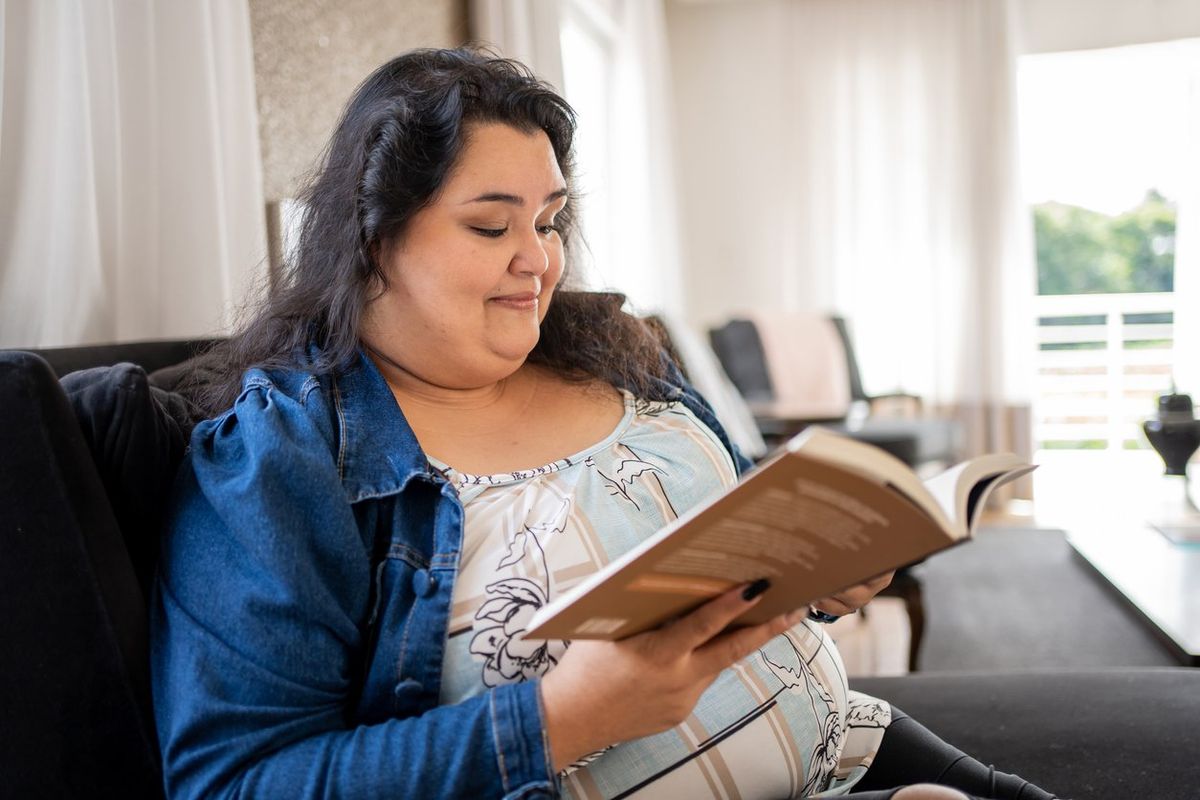Obesity is a disease with complex causes — and culture and socioeconomic status can play a significant role. This is especially true in the Latinx community in the U.S., where nearly 8 out of 10 Hispanic women are living with obesity or overweight. And 1 in 4 Hispanic children between the ages of 6 and 17 are living with obesity.
This is a public health concern because living with obesity or overweight puts people at a greater risk of high blood pressure, high cholesterol and diabetes — risk factors for cardiovascular disease and other chronic conditions.
Marissa Duswalt Epstein, R.D.N., M.B.A., nutritionist and member of Healthy Women’s Women’s Health Advisory Council (WHAC), says that watching her Latinx family, including herself, develop diet-related diseases and conditions was a heart-wrenching experience that led her to the realization that they were part of these staggering statistics. It wasn’t until she got to college that she was able to learn about proper nutrition and healthy eating patterns, and bring that information back to her family.
Watch, “Obesity Is a Complex Disease with a Variety of Treatments” >>
Reasons for obesity in the Latinx community
There are many reasons for obesity in the Latinx community, with cultural traditions being a significant factor that affects the diets of Latinx families living in the U.S. Epstein noted that, in these communities, it’s mostly the women and mothers who are feeding the family. This tradition places women in charge of cooking and caring for children, and it also means they’re the ones teaching the next generation about food. It’s for this reason that Epstein chooses an empathy-driven approach when working to help women develop healthy eating solutions for their families.
“The fact of the matter is that maybe eating a nutritious meal is not the most important thing you need to do that day. Maybe it is paying the electric bill ... I watched my family make all those choices instead of doing home-cooked meals. And I applaud women for making those hard choices,” Epstein said. She added that it’s quite common in the Latin culture to eat the same things every day, giving rice and beans as an example of foods that Mexicans have survived on for thousands of years. Learning to prepare lighter and healthier versions of favorite recipes can help families continue eating what works best for them.
Socioeconomic status is a challenge many Latinx families face as it relates to obesity. Finances can affect everything from education to food budgets to access to quality healthcare and even safe places to exercise. For some Latinas, lack of access to affordable healthy foods, not having safe places to exercise, and social or cultural attitudes about body weight are contributing factors to higher rates of obesity. Without access to healthy food options, many families resort to less nutritious alternatives.
In addition, Hispanics had the lowest rate of overall health insurance coverage in 2017, with fewer than 16 in 100 Hispanic people not having health insurance coverage compared to fewer than 6 out of 100 non-Hispanic whites, according to one study by the U.S. Census Bureau. This means that uninsured Latinx people are less likely than people with insurance to receive preventive care, nutritional guidance or management of chronic diseases like obesity.
Read: Social Determinants of Health, Health Disparities and Health Equity >>
Advocating for your own health
Susana Ajoy Alfonso, M.D., MS.c., at Emory Healthcare, explained that it is a must for people to learn how to care for their health on a daily basis. “We see patients for 30 minutes in the office two or three or four times a year, if we're lucky. But the life they live when they're not in our office has a much higher impact on their health than what we do for them here within our four walls,” Alfonso said.
Alfonso and Epstein both attempt to set their patients up for success by providing them with information and solutions to help them implement healthy lifestyle habits in their daily lives. They make suggestions based on each individual’s experiences and unique needs, including how to make healthier choices when it comes to diet and exercise, and how to manage diseases using the tools and resources that are readily available to each person.
Epstein said the widespread representation of what a healthy lifestyle is can feel exclusive by emphasizing foods that might not fit well with their recipes or might be expensive. This can discourage Latinx people from including healthy food choices in their diet or can make it difficult for them to do so in a way that honors their culture.
The same advice can be applied to an exercise routine. While messages in the media may give the idea that a gym membership or expensive piece of home exercise equipment is necessary, it’s important to remember that regular movement is key and that it can be as simple (and free) as taking a daily walk or practicing yoga in the privacy of your own living room.
Whether you’re trying to prevent or manage obesity for yourself or for a loved one, knowing how to navigate your healthcare plan so you’re advocating for the best care and treatments possible, as well as incorporating healthy lifestyle choices into your daily life, will be the greatest contributing factors to your success.
Talk to your HCP to better understand obesity and learn how lifestyle, diet and exercise, along with medication if needed, can help you live your healthiest life.
This resource was created with support from Novo Nordisk.
- Environmental and Societal Factors, Not Just Diet and Exercise, Contribute to Obesity ›
- Obesity, Racism and Covid: A Deadly Combination ›







